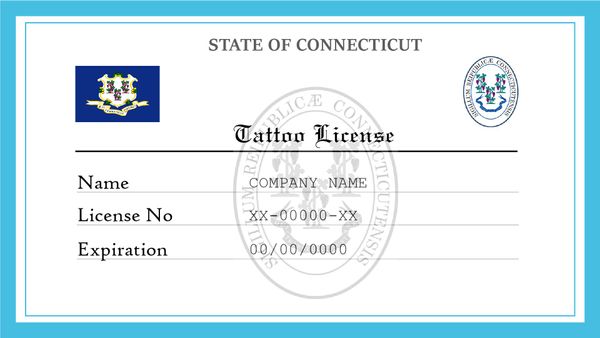
Connecticut Tattoo License
If you are in search of precise information about Connecticut tattoo licenses we are here to help you. Discover what are the state requirements, application process, and more.
How to get a license to tattoo?
Individuals who want to become body artists in Connecticut should apply to the CT Department of Public Health. The governing body sets rules of licensing for tattooists, permanent makeup artists, or any other individuals relevant to this scope of work.
In addition to state control, different counties in Connecticut may also establish their own conditions. For that reason, we recommend reaching your county’s office to familiarize yourself with the local requirements as well. Now, let’s talk about the main conditions of licensing.
Operating requirements in Connecticut
The body artists in CT should be state-licensed to carry out their work. The Department requires individuals to meet these conditions before applying for the body art licensure:
- Be at least 18
- Have identification documents such as ID, CT driver’s license, etc.
- Successfully complete the prevention of disease transmission and bloodborne pathogen courses
- Obtain a certificate of basic first aid from the American Heart Association or American Red Cross
- Gain 2,000 hours of practice and experience under the supervision of the certified technician
or
- Have proof of 5 years of continuous practice in the relevant scope of work
Keep in mind that the training hours are only applicable if the continuous practice was before January 1, 2015, and the supervisor was authorized during that period of time. So, next, let us unveil how you can apply for the licensure.
Application process
Remember that the authority doesn’t allow paper submissions for the licensing. You can apply online and submit relevant documents to their fax number (860 707-1931) if you don’t have the paperwork in an el format.
When you submit online, these are the documents you shall be asked to provide:
- Your recent passport-style photograph
- Proof of completion of the course
- Certificate of basic first aid received from the approved organizations
- 2,000 training verification form filled out by a certified tattoo technician
or
- 5 years of the practice affidavit form
Once, you submit all necessary documentation wait up to 4 weeks to get a response. If you get approval, the Department will send an email notification where the validation period and the license number are included.
Training permit
If you want to start your career in this field, you should gain some experience. To do that, the first thing is to find an authorized tattooist who shall pass his/her knowledge. After that, head to the Department to register as a student tattooist. Remember, that the duration of it should not exceed 2 years. Students should present the following paperwork for the permit:
- Proof of completing the course
- Certificate of basic first aid
- A statement from the authorized tattooist acknowledging his/her responsibility to supervise the student
To submit online for a Connecticut training permit, follow the link and fill out all the necessary fields. Moreover, don’t forget to attach all the forms. To add up, there is no fee for training permits for students.
Connecticut Tattoo License Renewal
The renewal for the tattoo licensure in CT is every two years. So, in order to renew it, it is a must to pass the course 6 months before the expiration date.
Licensing Fees
The initial cost of licensing is $250 (which is valid for two years). After that, individuals can renew it by paying $200. In addition to this, remember that the local counties may require other documents so be sure to contact your county’s office for additional info.
